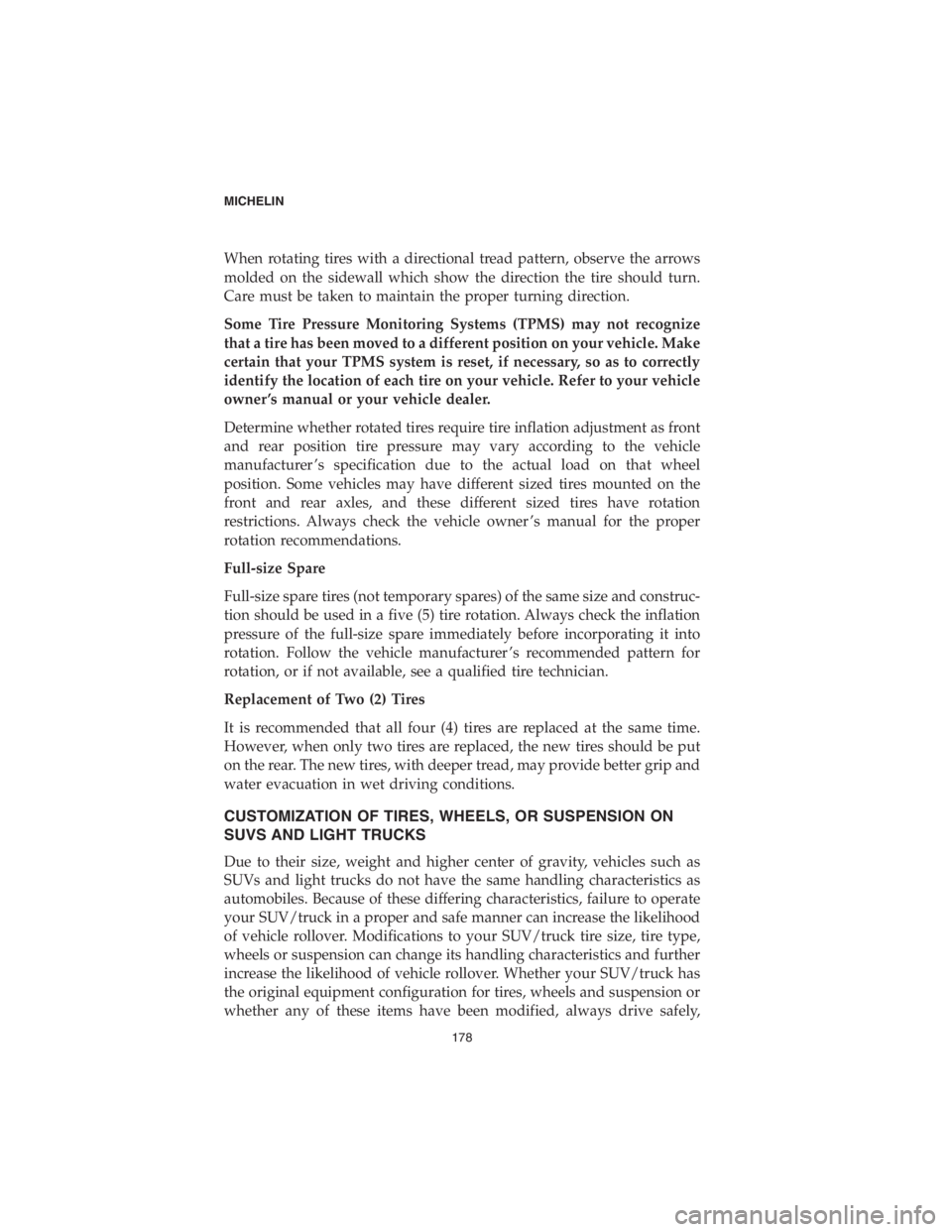TPMS reset DODGE CHALLENGER 2018 Vehicle Warranty
[x] Cancel search | Manufacturer: DODGE, Model Year: 2018, Model line: CHALLENGER, Model: DODGE CHALLENGER 2018Pages: 316, PDF Size: 3.15 MB
Page 39 of 316

BFGOODRICH® DOES NOT RECOMMEND MIXING SELF SUPPORT-
ING STRUCTURE (SSS) TIRES WITH NON-SSS TIRES OTHER THAN
THE TEMPORARY USE OF THE SPARE TIRE.
WINTER DRIVING
Tires which meet the Rubber manufactures Association (RMA) definition
of snow tires are marked M/S, M&S. On such tires, this designation is
molded into the sidewall. Tires without this notation are not recom-
mended for winter driving.
While All-Season tires are designed to provide reliable
performance in some winter conditions, the use of four
(4) winter tires is recommended for optimum perfor-
mance. Tires designated for use in severe winter condi-
tions are marked on at least one sidewall with the letter
“M” and “S” plus a pictograph of a mountain with a snowflake on it.
TIRE ROTATION AND REPLACEMENT
To obtain maximum tire wear, it may be necessary to rotate your tires. Refer
to your vehicle owner ’s manual for instructions on tire rotation. If you do
not have an owner‘s manual for your vehicle, BFGoodrich® recommends
rotating your tires every 6,000 to 8,000 miles (10,000 to 12,000 km).
Monthly inspection for tire wear is recommended. Your tires should be
rotated at the first sign of irregular wear, even if it occurs before 6,000
miles (10,000 km). This is true for all vehicles.
When rotating tires with a directional tread pattern, observe the arrows
molded on the sidewall which show the direction the tire should turn.
Care must be taken to maintain the proper turning direction.
Some Tire Pressure Monitoring systems (TPMS) may not recognize that a
tire has been moved to a different position on your vehicle. Make certain
that your TPMS system is reset, if necessary, so as to correctly identify the
location of each tire on your vehicle. Refer to your vehicle owner ’s
manual or your vehicle dealer.
Determine whether rotated tires require tire inflation adjustment as front and
rear position tire pressure may vary according to the vehicle manufacturer ’s
specification due to the actual load on that wheel position. Some vehicles may
have different sized tires mounted on the front and rear axles, and these
different sized tires have rotation restrictions. Always check the vehicle
owner ’s manual for the proper rotation recommendations.
BFGOODRICH TIRES
38
Page 179 of 316

When rotating tires with a directional tread pattern, observe the arrows
molded on the sidewall which show the direction the tire should turn.
Care must be taken to maintain the proper turning direction.
Some Tire Pressure Monitoring Systems (TPMS) may not recognize
that a tire has been moved to a different position on your vehicle. Make
certain that your TPMS system is reset, if necessary, so as to correctly
identify the location of each tire on your vehicle. Refer to your vehicle
owner ’s manual or your vehicle dealer.
Determine whether rotated tires require tire inflation adjustment as front
and rear position tire pressure may vary according to the vehicle
manufacturer ’s specification due to the actual load on that wheel
position. Some vehicles may have different sized tires mounted on the
front and rear axles, and these different sized tires have rotation
restrictions. Always check the vehicle owner ’s manual for the proper
rotation recommendations.
Full-size Spare
Full-size spare tires (not temporary spares) of the same size and construc-
tion should be used in a five (5) tire rotation. Always check the inflation
pressure of the full-size spare immediately before incorporating it into
rotation. Follow the vehicle manufacturer ’s recommended pattern for
rotation, or if not available, see a qualified tire technician.
Replacement of Two (2) Tires
It is recommended that all four (4) tires are replaced at the same time.
However, when only two tires are replaced, the new tires should be put
on the rear. The new tires, with deeper tread, may provide better grip and
water evacuation in wet driving conditions.
CUSTOMIZATION OF TIRES, WHEELS, OR SUSPENSION ON
SUVS AND LIGHT TRUCKS
Due to their size, weight and higher center of gravity, vehicles such as
SUVs and light trucks do not have the same handling characteristics as
automobiles. Because of these differing characteristics, failure to operate
your SUV/truck in a proper and safe manner can increase the likelihood
of vehicle rollover. Modifications to your SUV/truck tire size, tire type,
wheels or suspension can change its handling characteristics and further
increase the likelihood of vehicle rollover. Whether your SUV/truck has
the original equipment configuration for tires, wheels and suspension or
whether any of these items have been modified, always drive safely,
MICHELIN
178